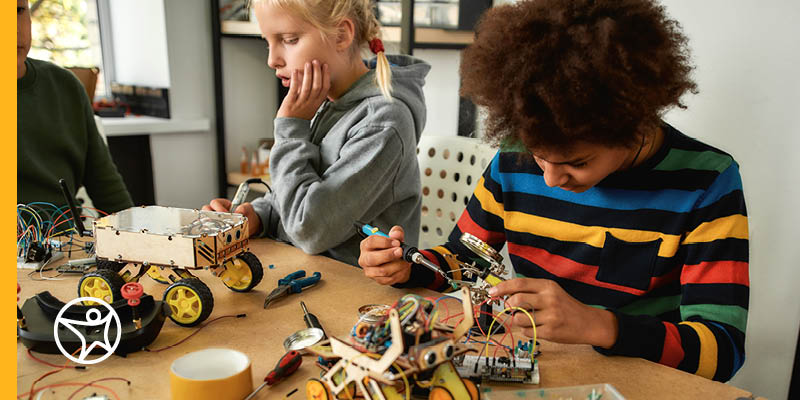Why Do Some Kids Hate School and What to Do About It?
by Phoebe Brown
byElizabeth Preston
5 min to readThere are numerous ways to approach teaching students and, as a parent or Learning Coach, you may feel at a loss as to where to start. A good place to begin is by understanding that high-quality curriculums often include some aspect of inquiry-based learning. So, it’s critical to understand what is inquiry-based learning, the benefits of inquiry-based learning, and how you can use this teaching method to support student’s education.
Inquiry-based learning is a student-centered teaching method that encourages students to ask questions and investigate real-world problems. It often enables students to connect what they are learning in school to the real world. The heart of inquiry-based learning is that students identify a question, problem, or topic that is rooted in the real world; they investigate the issue by using their critical-thinking and problem-solving skills; and they generate possible solutions or answers to questions and problems.
One way to define inquiry-based learning is to look at four types of inquiry:
A curriculum can focus on one of the types of inquiry, or it can use a mixture of types.
There are several benefits to incorporating inquiry-based learning into your child’s education. Some of these benefits include:

There are several ways for students to practice inquiry-based learning in school. Here are some inquiry-based learning examples:
Try debating an issue with your student. The student can pick the side that they are passionate about or ask the student to argue for the side they do not agree with. Defending a position they do not agree with often encourages them to delve deeper into the topic and explore the different sides involved. Debate helps students use their critical-thinking skills to investigate the topic and be able to articulate their thoughts clearly. Guided inquiry may be best for young learners still learning how to debate, and open inquiry or confirmation inquiry may be best for more academically advanced students.
Ask your student to identify a problem that they want to fix. This problem could be one that the student faces each day, one that connects with the student’s passions, or one that relates to the student’s desired career. Then, ask the student to find out why that issue is a problem and ask them to explore some possible solutions. This is best conducted under open inquiry, structured inquiry, or guided inquiry. Students may also consider creating an invention to solve the problem.
Science experiments are great opportunities for students to practice guided inquiry or structured inquiry. Take a look at our article on how to help your child create a successful science fair project for some interesting ideas.
Inquiry-based learning helps students become better problem solvers and critical thinkers. It also encourages students to think creatively and to be engaged with their schoolwork.
